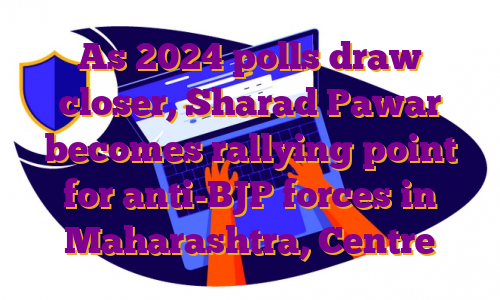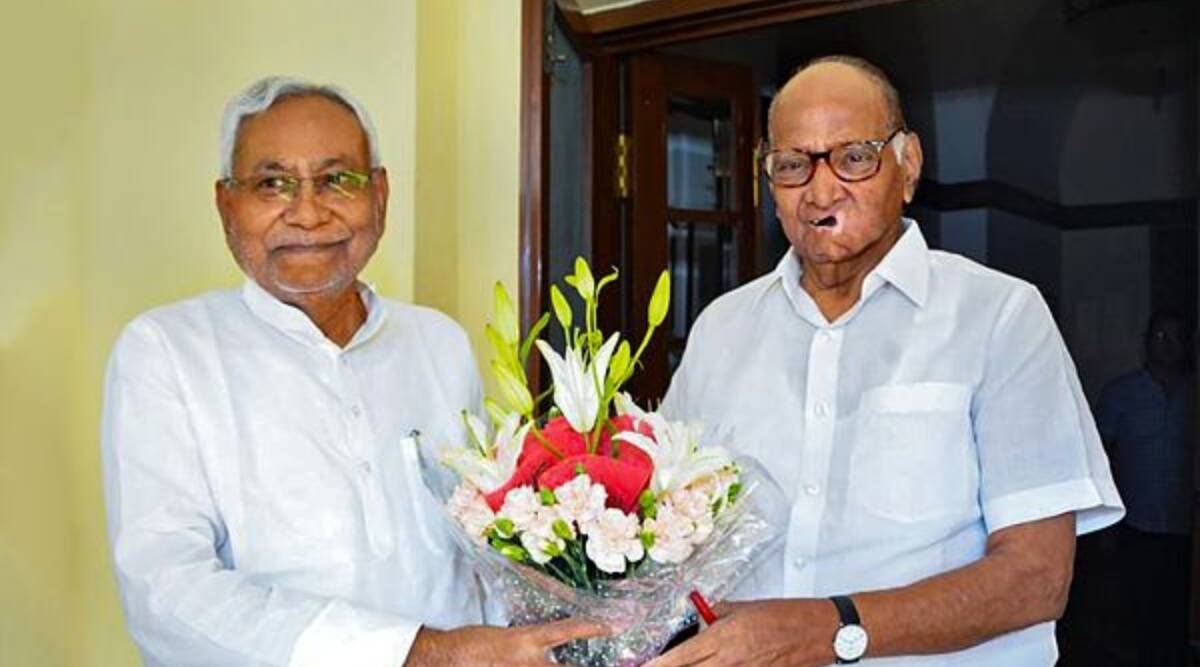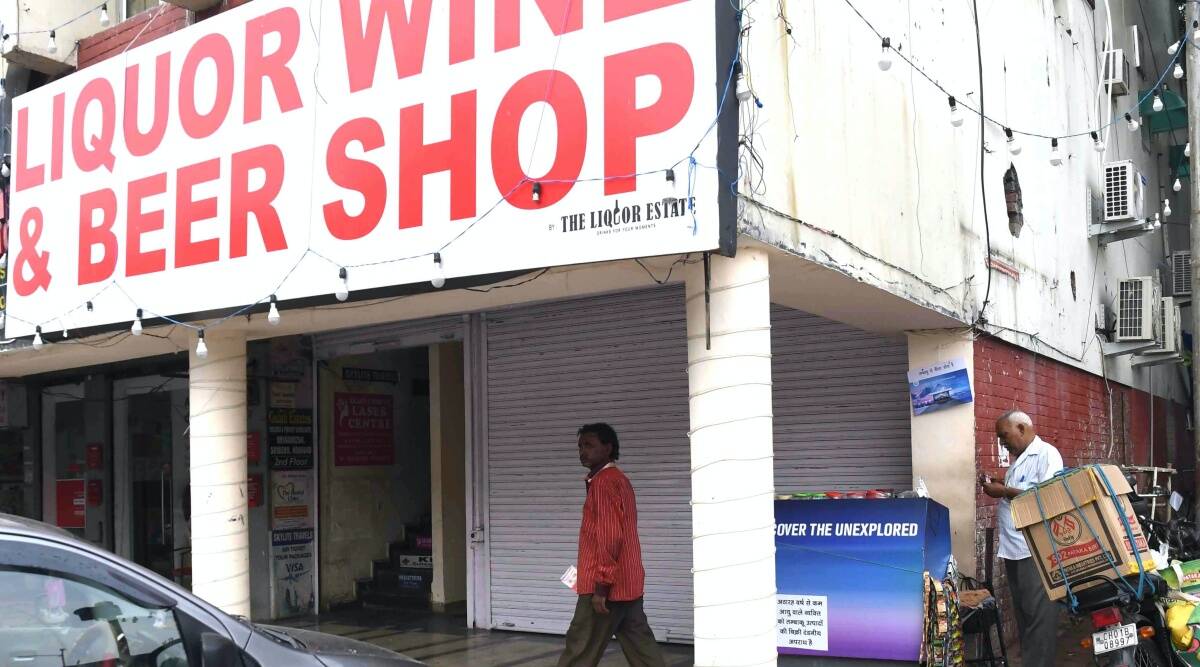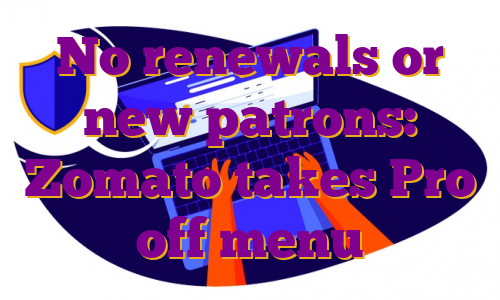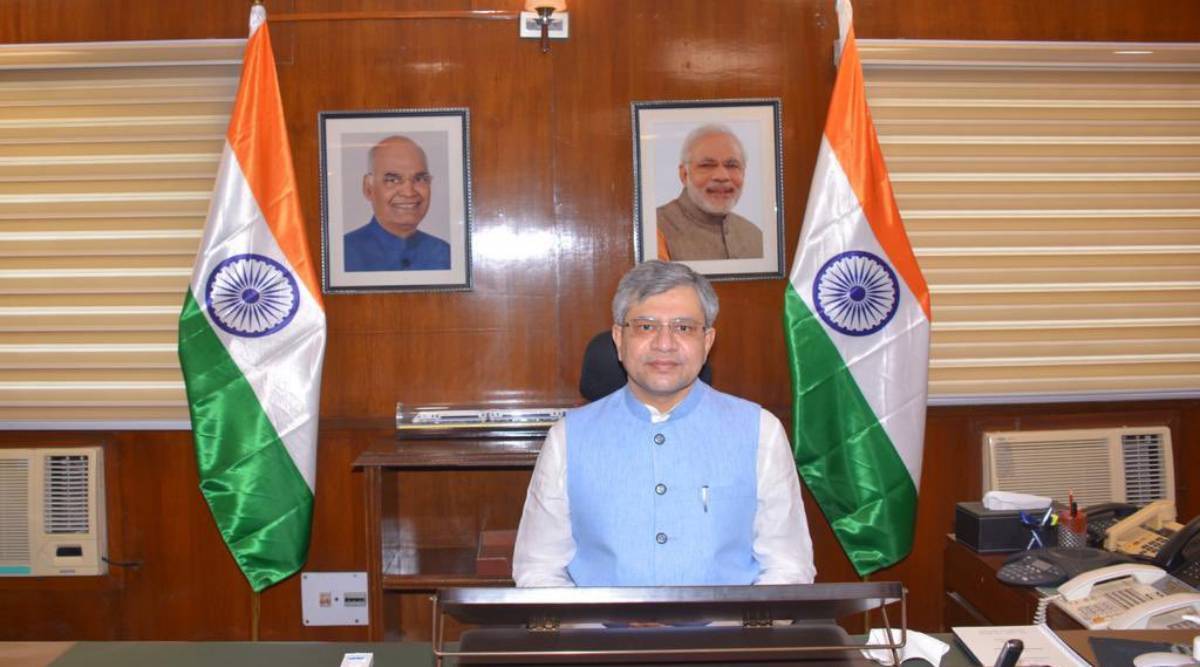Bihar Chief Minister Nitish Kumar met Nationalist Congress Party (NCP) president Sharad Pawar on Wednesday to evolve a consensus among non-BJP parties to forge a political front keeping the 2024 elections in sight. Though the efforts are still in the preliminary stage, the message that came across is that Pawar is playing the role of a catalyst to bring individuals across parties and states to the talking table.
Last week, Sharad Pawar had announced in Maharashtra that he would work to unite non-BJP parties, but he also made it very clear that he would not take any responsibility due to his age. Pawar’s refrain was that the BJP, led by Prime Minister Narendra Modi, failed to usher in the promised “achhe din” in the country. Most of the promises made in 2014 have remained on paper, he lamented.
At 81 years, Pawar is still among the most proactive leaders who extensively tour Maharashtra. However, the downfall of the Uddhav Thackeray-led Maha Vikas Aghadi (MVA) government after two and a half years has proved to be a setback for the NCP which was a crucial party in the coalition.
After the 2019 state Assembly elections that led to the Shiv Sena breaking ties with the BJP, Pawar had taken the initiative to unite the Congress, NCP and the Shiv Sena to form the tripartite MVA with the objective of keeping the BJP out of power in Maharashtra.
Yet, the experiment in the state was short-lived as the BJP succeeded in exploiting the unrest within the Shiv Sena, causing a vertical split in the party both in the state Legislative Assembly as well as the Parliament. Of the total 55 Shiv Sena MLAs, 40 walked out of the parent party under the leadership of Eknath Shinde whom the BJP rewarded with the most-coveted Chief Minister post.
Notwithstanding the setback, seasoned politician Pawar is now focused on building a front against the BJP ahead of the 2024 polls. In Maharashtra, during the Monsoon Session in August, Opposition leader Ajit Pawar and former chief minister Uddhav Thackeray had announced that the Congress, NCP and the Sena will put up a united front in the 2024 Assembly and Lok Sabha polls. They also intend to fight the BMC polls under the MVA banner.
What applies to Maharashtra is also being replicated at the national level. Pawar seems to have become the rallying point, but then this is not the first time that the idea of an anti-BJP front has been floated.
Sharad Pawar had on umpteen occasions in the past taken the lead to form a third front which was then perceived as a pressure group to fight both the Congress and the BJP. At times, the consolidation of such a group was seen as a method to bring regional parties to the centre stage of national politics.
A senior NCP state leader said, “Pawar has always worked to unite like-minded secular parties. The political agenda is to fight communal forces.” Ahead of the 2024 Lok Sabha polls, Pawar will once again continue the effort to get like-minded parties to put up a united front against the BJP.
Sources in the NCP, however, are cautious with one leader saying, ” At this stage, leaders are just meeting. Nothing concrete has emerged.”
Janata Dal (United) chief Nitish Kumar, meanwhile, is likely to meet leaders across parties, including Congress leader Rahul Gandhi, CPI(M)’s Sitaram Yechury, CPI leader D Raja, Indian National Lok Dal’s Om Prakash Chautala and Samajwadi Party chief Akhilesh Yadav, among others.
.

